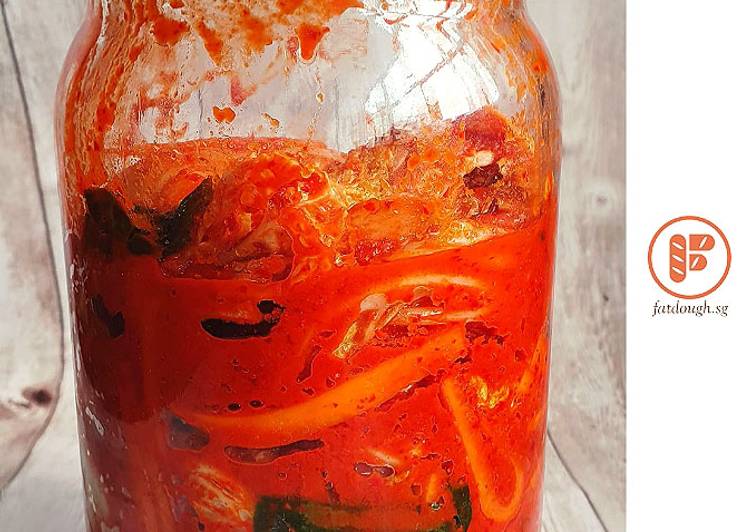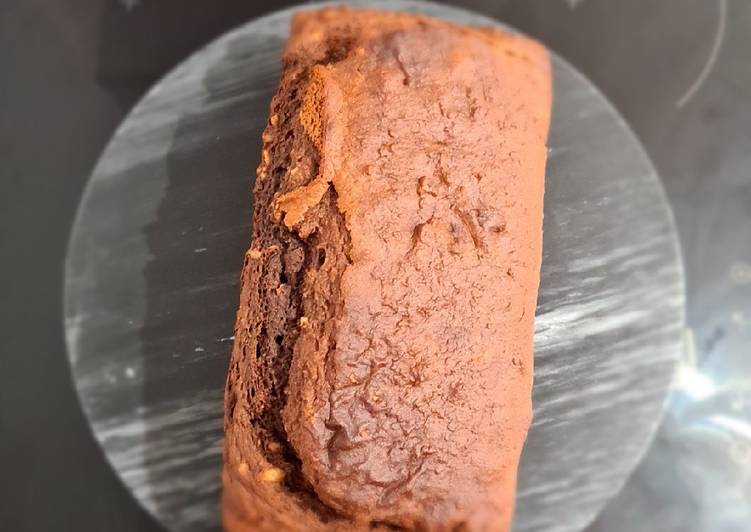
Hello everybody, I hope you’re having an amazing day today. Today, we’re going to prepare a distinctive dish, how to make vegan kimchi. One of my favorites food recipes. For mine, I will make it a bit tasty. This is gonna smell and look delicious.
How To Make Vegan Kimchi is one of the most favored of current trending foods on earth. It is appreciated by millions every day. It’s easy, it’s fast, it tastes yummy. They are fine and they look fantastic. How To Make Vegan Kimchi is something which I’ve loved my entire life.
It starts with making sure all of your equipment and your hands are clean. Making kimchi is not a good idea for beginners. It takes so much energy and patience to make this. Making kimchi is very time consuming and takes up a lot of space in your house.
To get started with this recipe, we have to prepare a few components. You can cook how to make vegan kimchi using 12 ingredients and 11 steps. Here is how you cook it.
The ingredients needed to make How To Make Vegan Kimchi:
- Take 1 Nappa Cabbage,
- Make ready Pink Himalayan Salt, For Seasoning
- Make ready 2 TBSP Vegan-Friendly Soy Sauce / Tamari,
- Make ready 2 TBSP Demerara Sugar,
- Prepare 1/4 Cup Fresh Pineapple Juice,
- Take 1/4 Cup Warm Water,
- Make ready Ginger Coarsely Sliced, 1"
- Take 1 Yellow Onion Coarsely Sliced,
- Take 6 Cloves Garlic Coarsely Minced,
- Make ready Korean Chili Flakes, 1/2 Cup Adjust To Preference
- Take Carrots Julienned, 1 Large
- Take Scallions Slice To 2" Long, 2 Bunches
It's usually made with fish or shrimp paste, but this vegan kimchi is made without either. The first time I ate kimchi, I totally fell in love. Unfortunately, after a few more kimchi dining experiences I learned that I was in love with something very un-vegetarian. Most kimchi (also kimchee or gimchi) is made with fish sauce to give it that unique tangible umami taste.
Instructions to make How To Make Vegan Kimchi:
- Peel and discard the outer layer of the cabbage. - - Peel and wash each cabbage layer thoroughly. - - Lay layers of cabbage onto a clean plate. - - Sprinkle some salt over the top. - - Place another layer of cabbage over the top.
- Pressing as you stack. - - Repeat the process until all the layers of cabbage are stacked and seasoned. - - Set aside for 30 mins. - - While the cabbage is resting, add soy sauce, sugar, pineapple juice and water into a bowl.
- Stir until well combine or until the sugar has dissolved. - - Add ginger, garlic, onion and chili flakes into a blender. - - Add in the soy sauce mixture as well. - - Blitz until smooth. - - Transfer into a bowl and set aside. - - The cabbage should have rested for 30 mins.
- Before touching the cabbage, make sure your hands are thoroughly cleaned. - - Flip the layers of cabbage onto another clean plate. - - Sprinkle with salt, pressing and stacking. - - Repeat the process with the remaining layers of cabbage. - - Set aside to rest for 30 mins.
- This is the 2nd flip. There will be a total of 4 flips. - - While the cabbage is resting, prepare the carrot and scallions. - - Toss the carrot and scallions with the chili mixture, making sure they are well coated. - - Set aside. - - It should be time for the 3rd flip, season, press and stack. - - Set aside to rest for 30 mins.
- While the cabbage is resting, sterilize the jars and lids in simmering water for 5 mins. - - It should be time for the 4th and last flip, season, press and stack. - - Set aside to rest for 30 mins. - - You can wash the dishes while waiting. - - After 30 mins, wash each layer of cabbage thoroughly under running water to remove excess salt.
- You can pad the cabbage dry with kitchen paper, but I prefer to place them onto plates and allow them to air dry naturally. It will take about 2 hrs, flipping halfway thru. - - Once the cabbage has dried, transfer the carrot and scallions chili mixture into a large mixing bowl. - - Toss in 2 layers of cabbage.
- Coat each layer well with the chili mixture. - - Repeat the process for the remaining layers of cabbage. - - Transfer into the sterilized jars. Press with the back to a spoon to compact the kimchi. - - Sealed and set aside in a cool and dry place for 24 hrs.
- After 24 hrs, remove the lid and using the back of a spoon, press and compact. - - If bubbles start to form, it is a good indication that it is fermenting well and there is still room to press and compact. - - Seal and keep in a cool and dry place.
- Repeat this process every 24 hrs up to a total of 72 hrs or 1 week. - - The longer you allow it to ferment, the tangier and flavorful the tastes will be. - - Once you are satisfied with the taste, chill and keep in the fridge. - - It can be kept for up to 1 to 2 months. - - Be sure to use clean utensils to consume the kimchi.
- Here's the difference between 72 hrs and 7 days aged: - - The 7 days aged kimchi is definitely far superior in terms of flavors and aftertaste. But, it might too overpowering. The 72 hrs aged kimchi does has that tanginess and spiciness. It will be perfect if the kimchi isn't the star of the dish.
Unfortunately, after a few more kimchi dining experiences I learned that I was in love with something very un-vegetarian. Most kimchi (also kimchee or gimchi) is made with fish sauce to give it that unique tangible umami taste. I wanted to make my kimchi vegetarian/vegan and so I experimented with flavours notorious for that elusive fifth taste known the world over as "umami" (after sweet, sour, salty and bitter). This vegan kimchi recipe is inspired by temple kimchi, but it's definitely NOT temple kimchi. There are five forbidden vegetables in temple cooking, and garlic and scallions are I really liked how this vegan kimchi turned out.
So that is going to wrap this up for this special food how to make vegan kimchi recipe. Thanks so much for your time. I am confident you can make this at home. There’s gonna be interesting food in home recipes coming up. Remember to bookmark this page on your browser, and share it to your family, friends and colleague. Thank you for reading. Go on get cooking!

